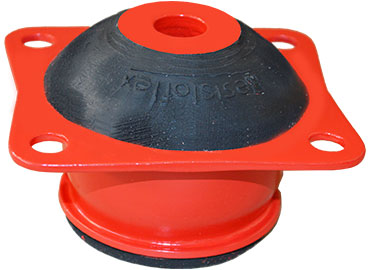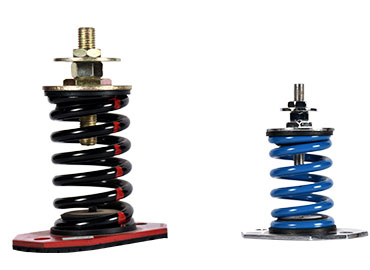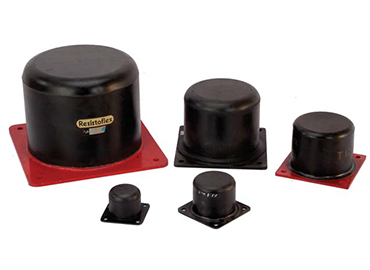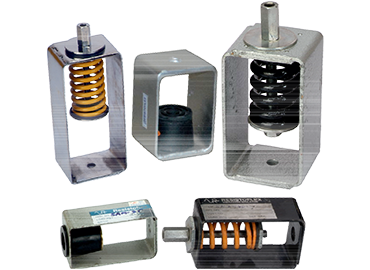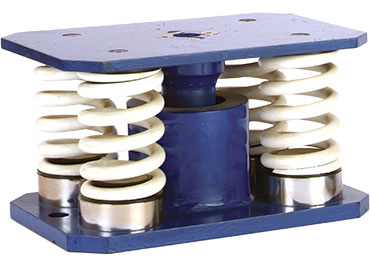Anti-vibration mounts, also known as vibration isolators, are
essential components designed to reduce vibrations and noise generated by various
types
of machinery and equipment. These mounts are typically made from rubber or a
composite
of materials that include rubber, steel, and sometimes plastic. By absorbing and
dampening vibrations, they play a crucial role in maintaining equipment performance
and
longevity.
Key Advantages
- Noise Suppression: One of the primary benefits of using anti-vibration
mounts is the significant reduction in noise levels. Machinery operating at high
speeds or with heavy loads can produce considerable noise, which can be
disruptive
and harmful over time. Anti-vibration mounts help to minimize this noise,
creating a
more pleasant and safer working environment.
-
Vibration Control: Vibration can be detrimental to both the machinery
and
the operators. It can cause wear and tear on equipment, leading to frequent
maintenance and potential breakdowns. For operators, continuous exposure to
vibration can lead to health issues, such as hand-arm vibration syndrome (HAVS).
Anti-vibration mounts mitigate these issues by dampening the vibrations,
ensuring
smoother operation and reduced strain on both machinery and people.
- Shock Absorption: In addition to controlling vibration, these mounts
also
absorb shocks. This is particularly important for sensitive equipment that could
be
damaged by sudden impacts or excessive movement. By cushioning the equipment,
anti-vibration mounts help prevent damage and extend the lifespan of the
machinery.
- Easy Installation: Many anti-vibration mounts are designed for easy
installation. This means they can be mounted without the need for complex
anchoring
systems. This not only saves time during the setup but also makes it easier to
reposition or replace the mounts as needed.
Applications
Anti-vibration mounts are used in a wide range of applications across
various
industries:
- Industrial Equipment: These mounts are widely employed in
industries
such
as plastics, food processing, beverages, and pharmaceuticals, and power
plants.
They
ensure that high-speed machinery operates smoothly without transmitting
excessive
vibrations to the building structure or surrounding equipment.
-
Workshop Machinery: In workshops, anti-vibration mounts are used
for
mounting machinery like lathes, milling machines, and grinders. These mounts
enable
the equipment to operate more quietly and efficiently, reducing the need for
floor
anchoring.
- High-Speed Equipment: For machines that generate significant
vertical
and horizontal forces, such as compressors and generators, anti-vibration
mounts
are
indispensable. They help in maintaining the stability of the equipment and
reducing
wear and tear caused by constant motion.
How to Choose the Right Anti-Vibration Mounts
- Determine Load: Start by identifying the total weight of the
equipment
and
the number of mounts required to support it. This helps in selecting mounts
that
can
handle the load without compromising performance.
-
Measure Deflection: Static deflection, which refers to the
compression
of
the mount under the weight of the equipment, is a critical factor. Proper
deflection
ensures optimal vibration dampening and longevity of the mount.
- Evaluate Speed: Consider the operating speed of the machinery to
determine the forcing frequency. This frequency impacts the selection of the
right
mount, as different mounts are designed to handle specific ranges of
vibration
frequencies.
- Select Mount Type: Based on the load, deflection, and forcing
frequency,
choose a mount that provides the desired vibration reduction. There are
various
types of mounts available, including rubber mounts, spring mounts, and
combined
mounts with both rubber and metal components.

